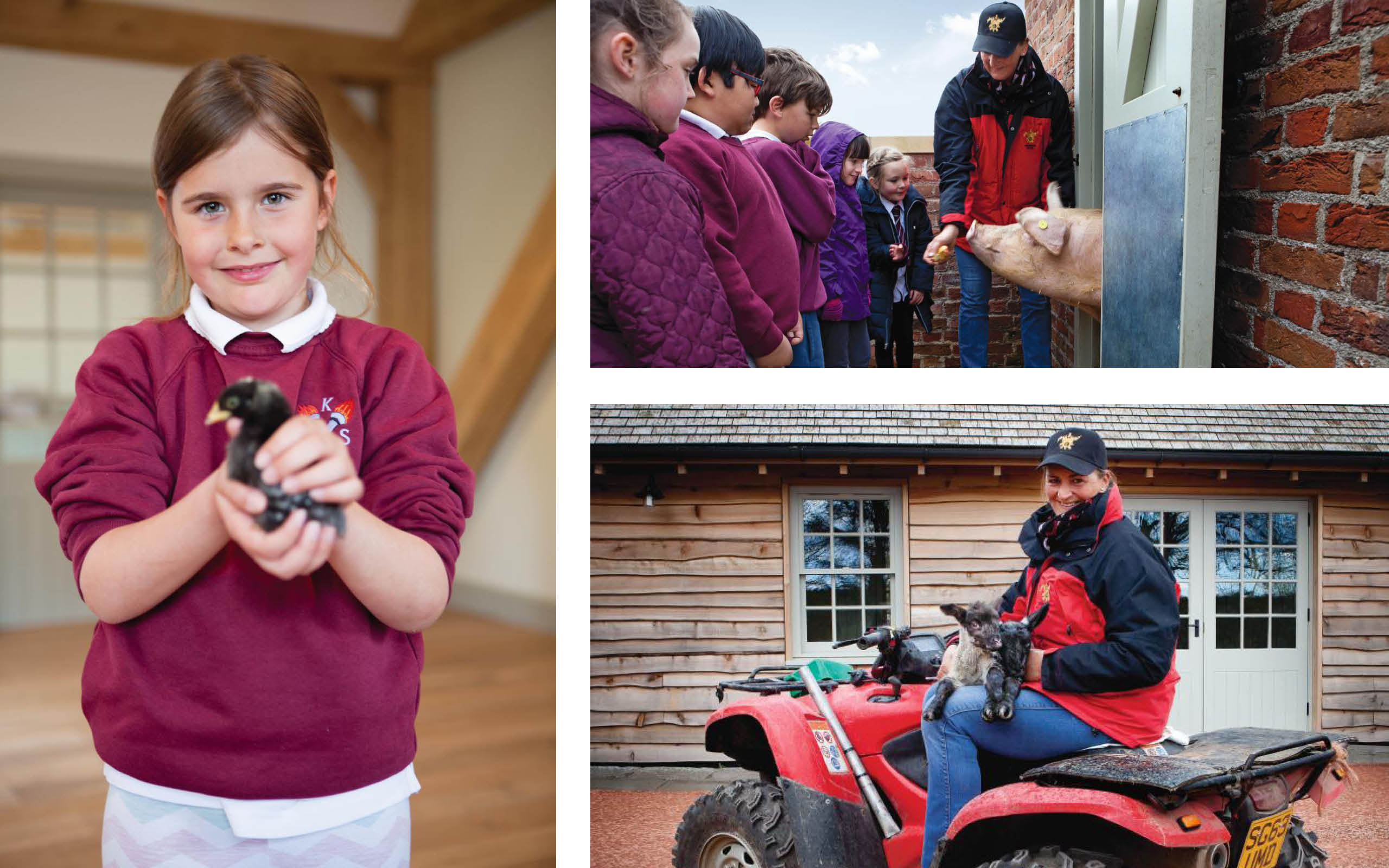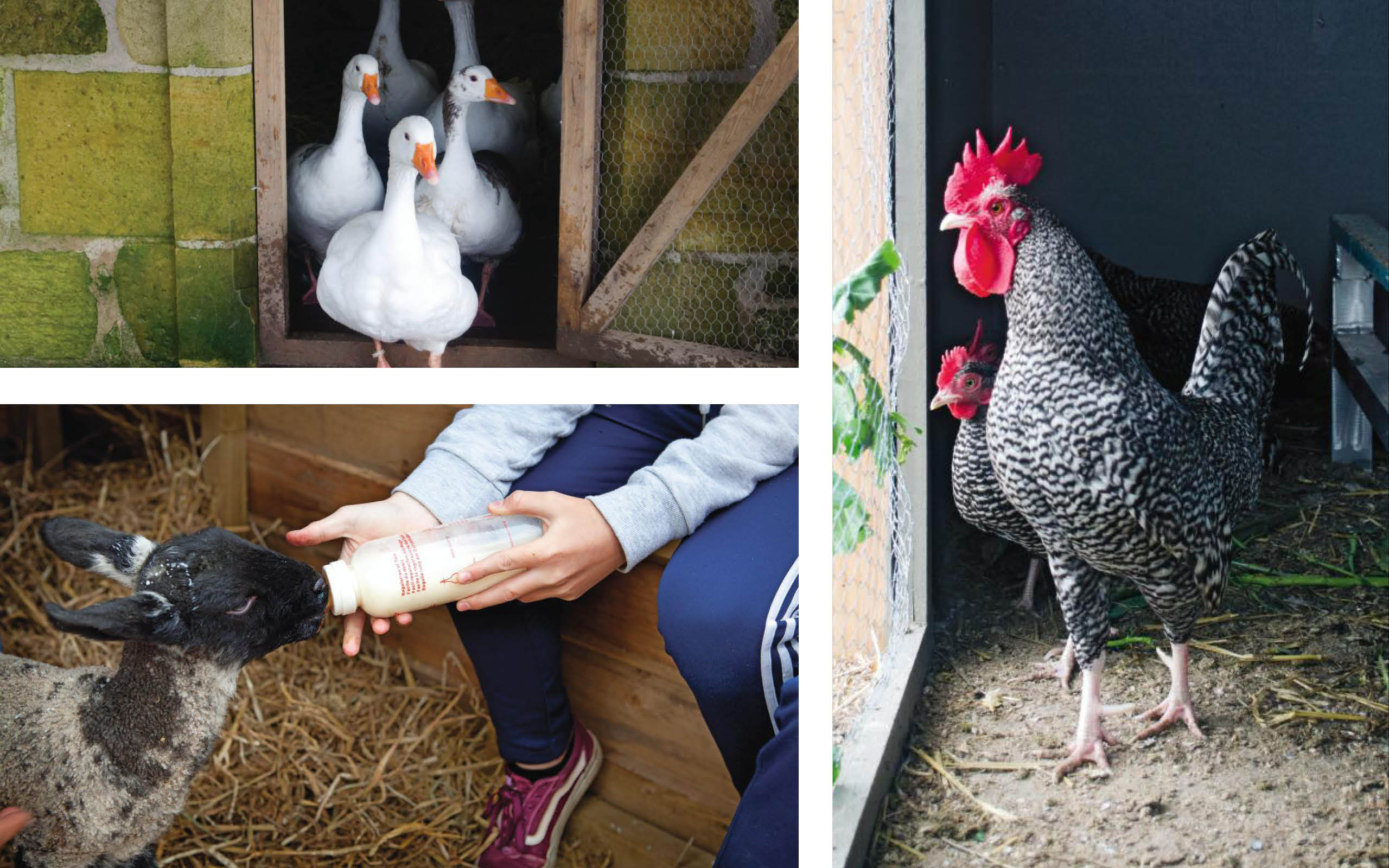
News. A day at Valentin’s Education Farm
25th of July, 2017
High-pitched squeals emanate from a nearby pigsty – and they’re not the porcine kind. Children from a local primary school are feeding rare breed British Landrace pigs and an inquisitive sow nuzzles into a boy’s pocket searching for treats. “Whoever said pigs were greedy were right,” he laughs. A mischievous grin spreads across a classmate’s face as he quips: “Aye, he eats more than your dad!”
Farmer’s wife Denise Rowell Richardson calms the group and moves them into the classroom where sleepy, young chicks are nestled in a basket. The children form a quiet group around Richardson as she scoops one up. From the back of the group a shy young girl comes forward and delicately holds one to her chest: the chick falls asleep and she beams with pride. Denise whispers conspiratorially, “I love it when the timid ones become more confident as the day progresses.”
The group is on a Meeting the Animals tour, one part of an experiential day at Valentin’s Farm, the newly opened learning initiative at Dumfries House. The project’s been created to teach the role of livestock in the food chain and is complemented by the Pierburg building and adjacent Kauffman Education Gardens, where schools and families have been learning about gardening, horticulture and food preparation since 2013.
Watching the group engage with farm life is an uplifting sight, but like the pigs they were feeding, these children too are a rare breed. Countryside education, learning about farming, conservation and food production has diminished over the years. Health and safety concerns, married with an increasingly urban lifestyle, means people are lesslikely to live near farms or woods and children have fewer opportunities to engage with animals and agriculture: the result is a generational disconnect.
A 2015 report commissioned by Linking Environment And Farming (LEAF) found that on average 1 in 3 children had not heard classic farm animal sounds in real life, with thousands only hearing it through their TV or computer screens. In addition, a 2013 UK-wide report by the British Nutrition foundation found that one in five primary school children and 18 per cent of secondary school pupils had never been to a farm.

Where the food we eat comes from has become a mystery to the younger generation. Their contact with produce is mainly at the end of the production line, courtesy of a supermarket or takeaway, which means they are increasingly removed from what they eat. It’s perhaps not surprising that LEAF’s survey found that one in five children did not know that bacon came from pigs, with one in 20 thinking cheese did come from them. And a quarter of children didn’t know the names for baby animals such as cows, sheep, pigs and chicken. “These days, children have so little understanding of where their food comes from,” explains Valentin’s Farm’s Susan Macdonald. “We’re aiming to change that by giving them a farm-to-fork experience of the animals.” The new site, generously funded by the Pierburg family, contains a central learning hub (comprising two classrooms) a goose house, sheep shelter, cowshed, turkey house, duck house and pond. And, of course, the pigsties, all housing rare breeds selected by HRH The Duke of Rothesay.
Lessons sensitively cover the value of the animals in food production from birth to slaughter and include teaching children about the range of products that livestock can provide, from weaving wool to dairy produce. To date, props include a fibreglass milkable cow and plastic eggs, and the children are able to make ice cream and churn butter back in the Pierburg buildings’ purpose-built kitchen.
Not understanding food production is affecting the younger generation’s health: statistics for the UK parliament released in January this year found that 16 per cent of children in Scotland aged 7 to 11 and 15 per cent aged 12 to 15 are at risk of obesity. Knowing what’s on your plate not only plays a key role in combating poor diet and potential ill health, but it can also lead to greater social development.
“As educators, we know that young children imitate what they see and experience,” explains Macdonald. By tending the livestock with Richardson and quietly observing – bar the odd piggy-feeding experience – the children learn about their differences, similarities and needs, such as food, shelter, water and space. Interaction with the animals and a chance to witness the birth of lambs and piglets, and see chicks hatch has proved particularly popular.

Caring for an animal in its own environment creates vivid memories. Seeing one in the flesh, hearing it, smelling it creates a connection and deepens empathy; a valuable life lesson. The aim here is clear: conservation through education. Children need to form bonds with animals to safeguard both their and the animals’ future. “How can you care about something you’ve never met?” asks MacDonald.
This is why the Rare Breeds Trust is intrinsic to the project. “It’s vital that the next generation connects with the animals; these children will be the consumers and the livestock keepers of the future,” agrees Field Officer Ruth Dalton. “We need more people to understand the importance of varied and adaptable livestock genetics, they help to provide security in the face of disease outbreaks or climate change, manage habitats for biodiversity and ecosystem services, and provide food and fibre.”
It’s an ambitious programme, but one the staff are fully committed to. “We have a unique opportunity and a duty to teach children the value of agriculture and our part in conserving farmland,” enthuses Macdonald. “Otherwise, once these animals are gone, they’re gone forever.”